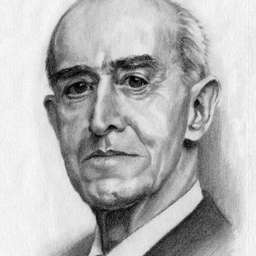1911-1920
Spanish football was going through a period of difficulty and uncertainty. Real Madrid was not completely unaffected by these problems, but it overcame them thanks to some good work from its directors. With a growing fanbase, they saw the need to change grounds in order to facilitate the number of visitors and obtain more money. The club moved to the O’Donnell Stadium. It was then that the King of Spain's high steward granted Madrid the title ‘Real’ (1920).

It was thought that the constitution of a Federation would be a quick solution to the crisis, but it was not to be. Each company was looking out for its own interests, and while some supported the Federación, others formed another organisation in parallel, the Unión de Clubes. The predominant feeling at Madrid was one of disappointment and disillusion. The board of directors even had to take action to avoid the 'resignation' of the president, Adolfo Meléndez.

The duplication of competitions and interests did nothing to undermine expectations in the world of fútbol. The fans were still turning up to see their team. Madrid, with the move to O’Donnell, had taken its first step towards professionalization. More spectators, more profit and more money to buy players. The new ground was better than that of Villa y Corte, with a capacity of 5,000.

The 1915-1916 season produced a brilliant performance in the Campeonato de España. The team was the runner-up after winning an epic semi-final against Español and losing an equally competitive final against Athletic de Bilbao. The circumstances of that match took their toll and resulted in the resignation of the entire board of directors, with Pedro Parages taking the reins from Adolfo Meléndez. The changes bore fruit, as the next season Madrid was the champion of Spain once more.

The Royal Family King Alfonso And queen victoria Eugenia Attend Real madrid charity match
ALFONSO XIII STEPS IN TO BRING PEACE TO FOOTBALL
In light of the bitter struggle between the Federación and the Unión de Clubes in recent years, king Alfonso XIII decided to intervene. He received the president of the Federación, Juan Padrós, and recognised the organisation as the only representative body of Spanish football. At the same time, he urged the union to “embrace it and forget the bickering”. A reconciliation deal was signed that put Spanish football back on track.
SANTIAGO BERNABÉU, THE PLAYER (1913)
Once the organisational problems had been resolved, things began to return to normal. This is when one of Madrid's legends, Santiago Bernabéu came into the picture. And he did so as a player. He was a stocky forward with a great eye for goal, the man from La Mancha eventually became the team's captain and one of the club's best-known figures. It was a sign of what was to come years later at the helm of the entity.

CUP WINNERS AFTER NINE YEARS
It had not been a particularly prolific time on the field for Madrid. The expectations generated by the team were not being turned into titles. But that changed in the 1916-1917 season. The Whites, after a meteoric struggle against Europa in the semi-final, faced a final against the almighty Arenas de Guecho. Arthur Johnson's understudies played a spectacular game, winning in extra time to bring the cup back to Madrid.




HONOURS In Between 1911-1920
REGIONAL CHAMPIONSHIP 5
SPANISH CUP 1
FROM 1911 To 1920 Real Madrid Won 1 Spanish Cup And 5 Regional Cup

Post a Comment